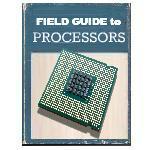
By Rich Robinson for Windows Guides
Field Guide to Today’s Processors
If you’re in the market to buy a PC and you’re looking for the best value for money, you’ve likely asked yourself: “what’s the difference between Dual and Quad Core and what about i3, i5, and i7?”
This guide offers a basic explanation of these five types of processors and will help you determine the best for your needs.
This guide will answer the following questions:
What is a Processor?
The Processor or Central Processing Unit (CPU) component of your PC carries out instructions given to it by your Operating System (Windows.) Think of the processor as a brain that receives instructions and messages (i.e. “HOT HOT HOT Burning!!!”) and sends out instructions to other hardware (i.e. “Arm: lift hand” or “mouth: open; vocal chords: scream”.)
What is a Core?
A standard processor has one core (single-core.) Single core processors only process one instruction at a time (they do use pipelines internally, which allow several instructions to be processed together; however, they are still run one at a time.)
What is a Multi-Core Processor?
A multi-core processor is composed of two or more independent cores, each capable of processing individual instructions. A dual-core processor contains two cores, a quad-core processor contains four cores, and a hexa-core processor contains six cores.
This excerpt is shared with permission from Windows Guides.




